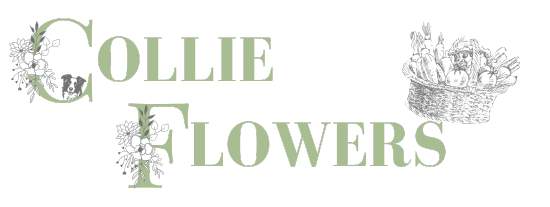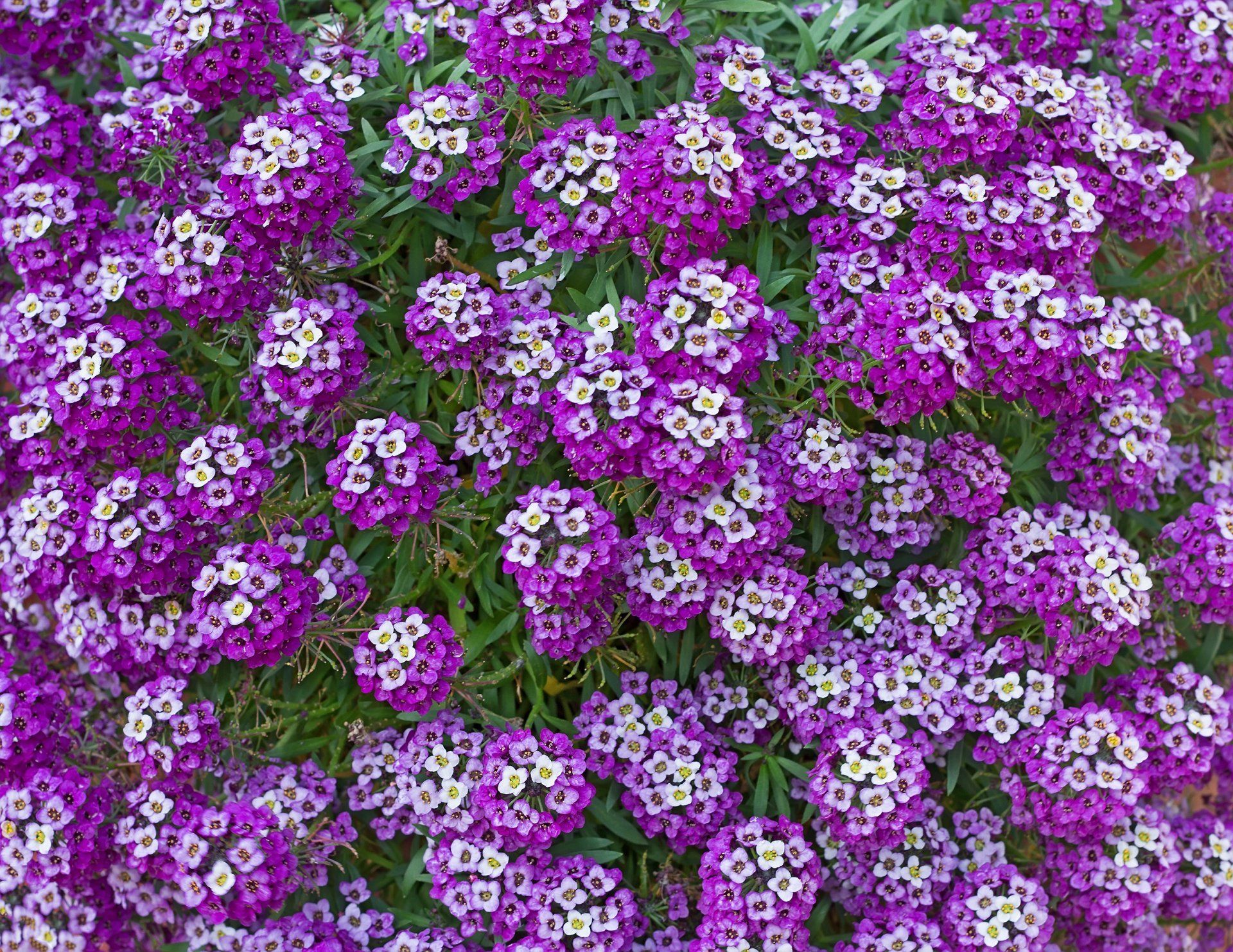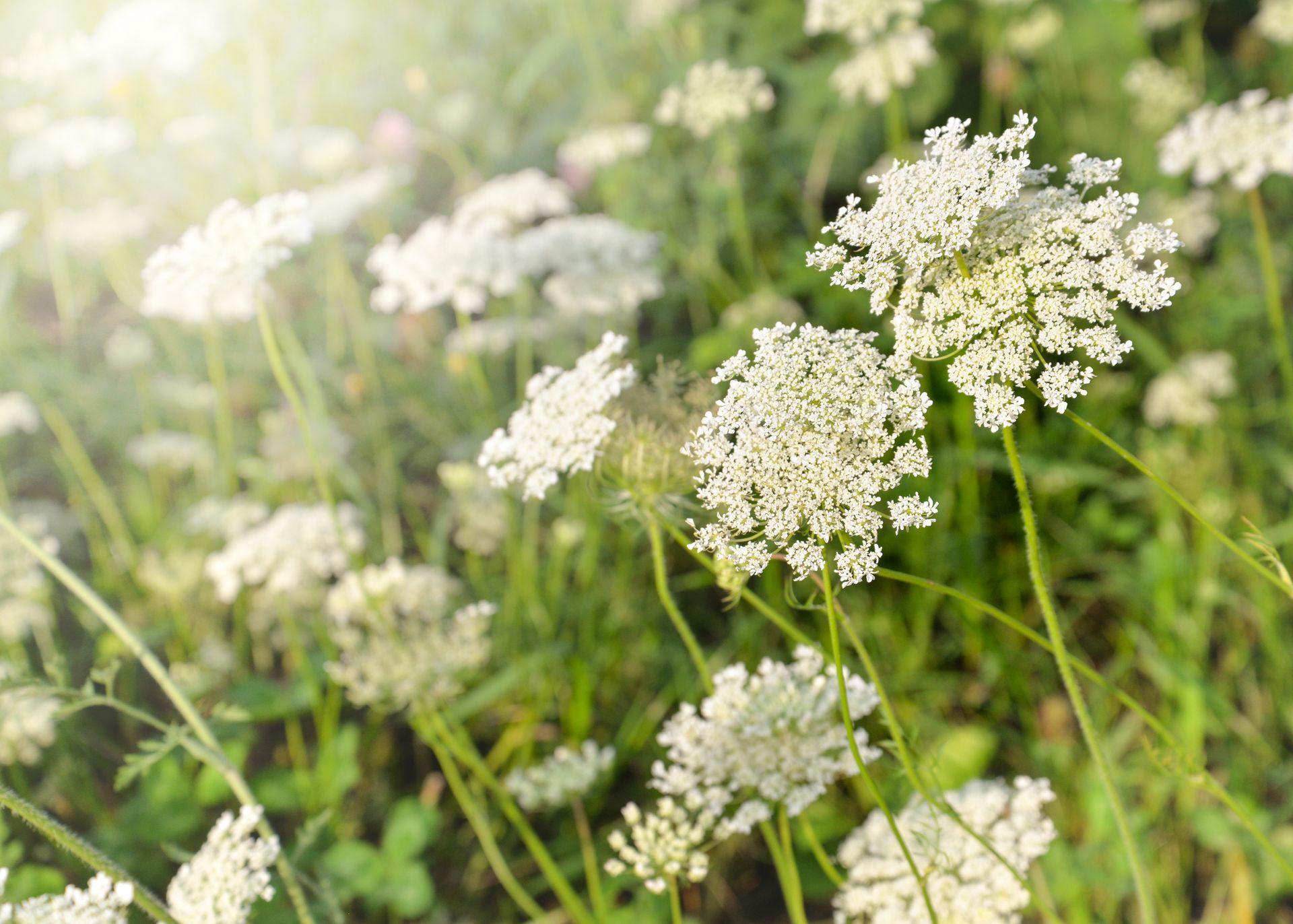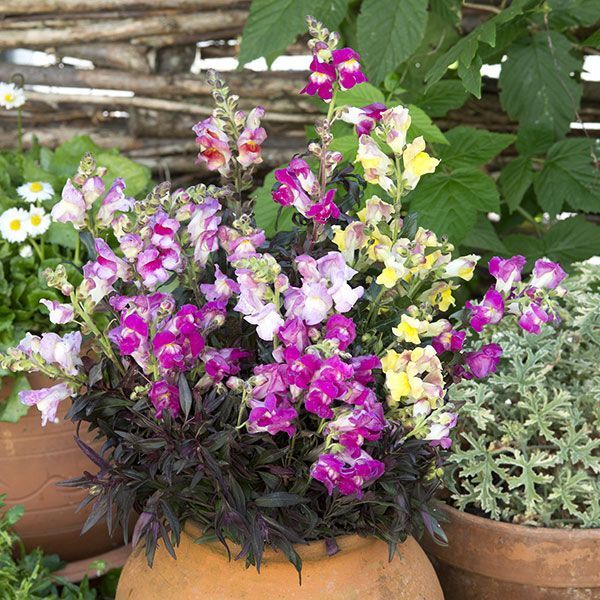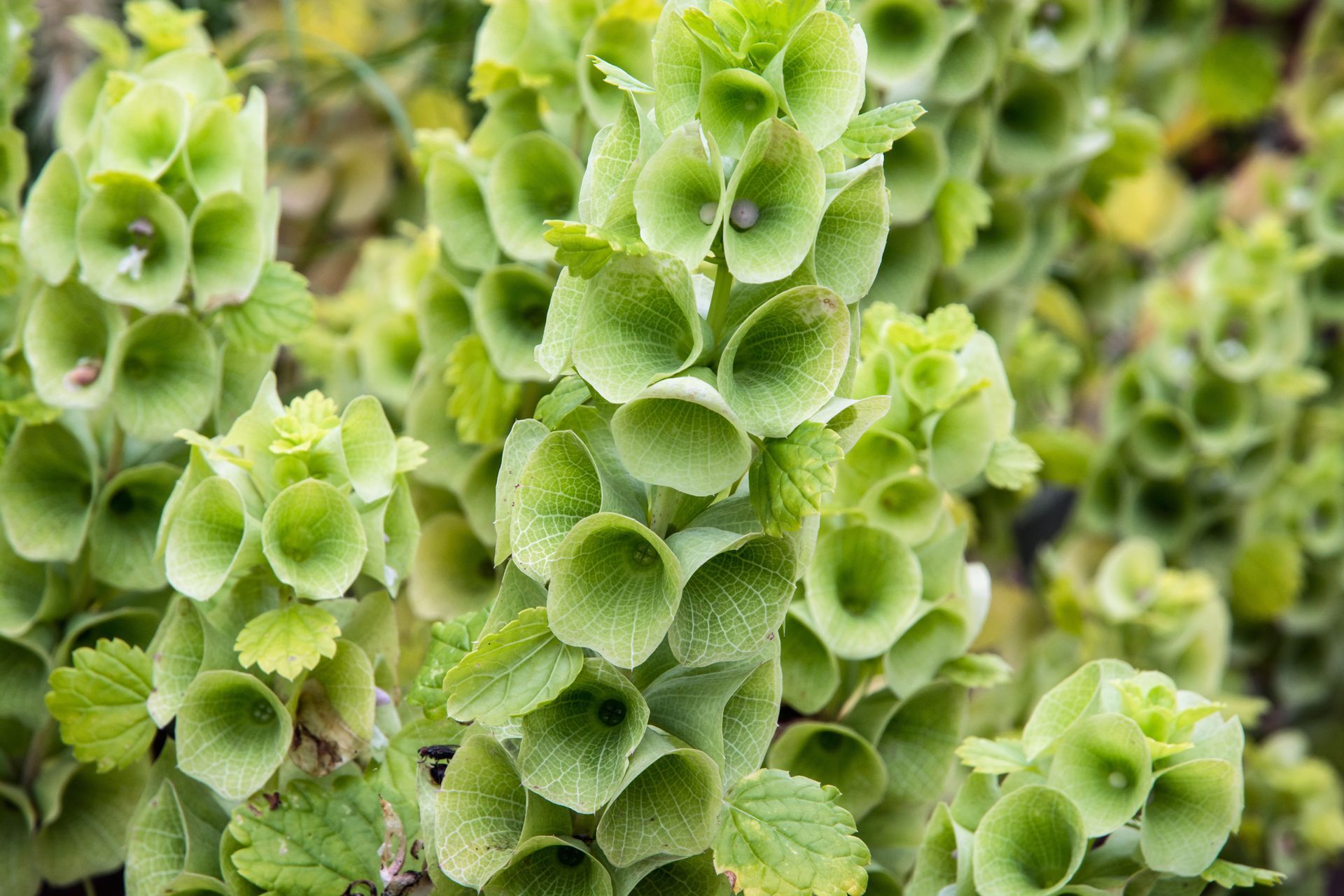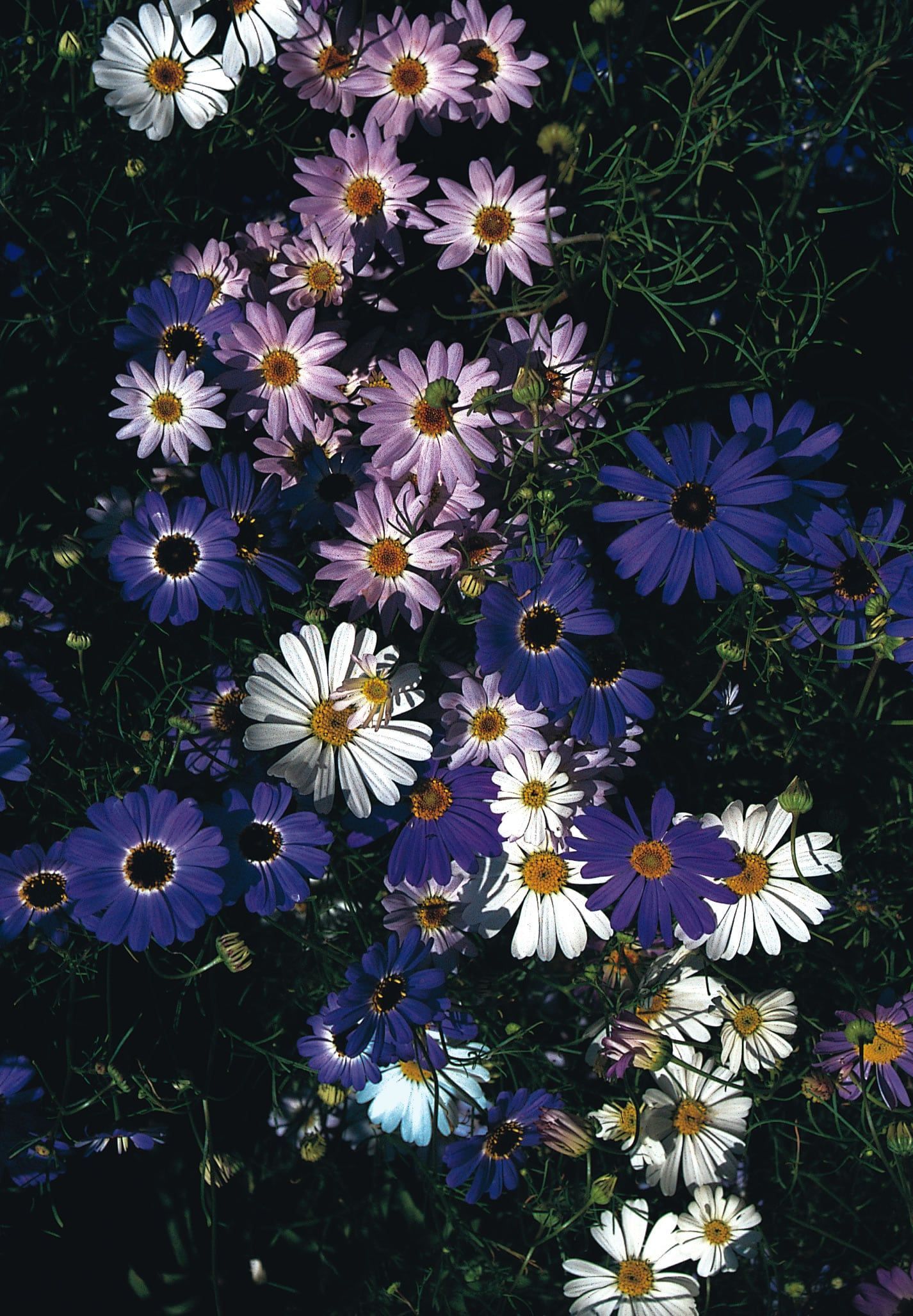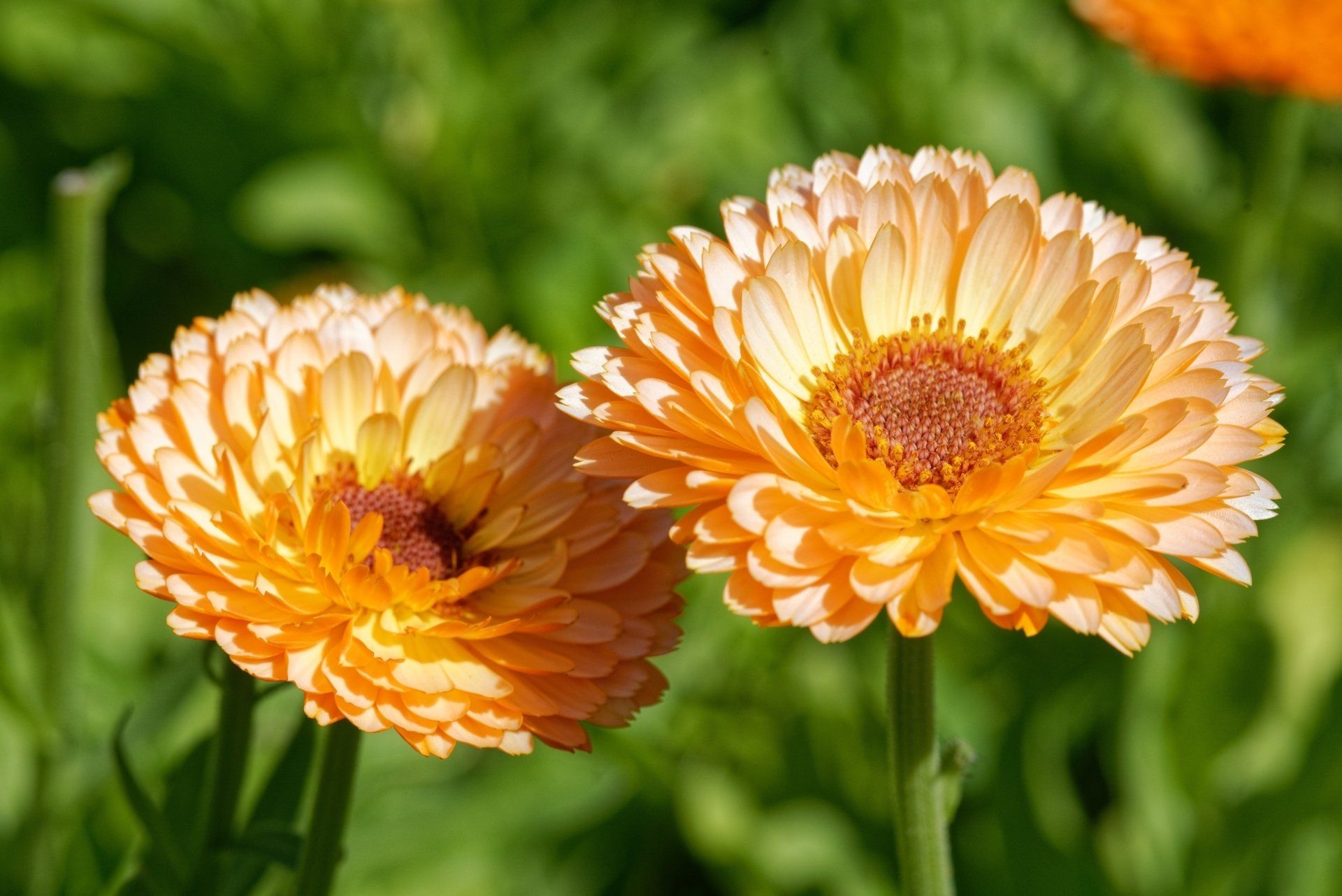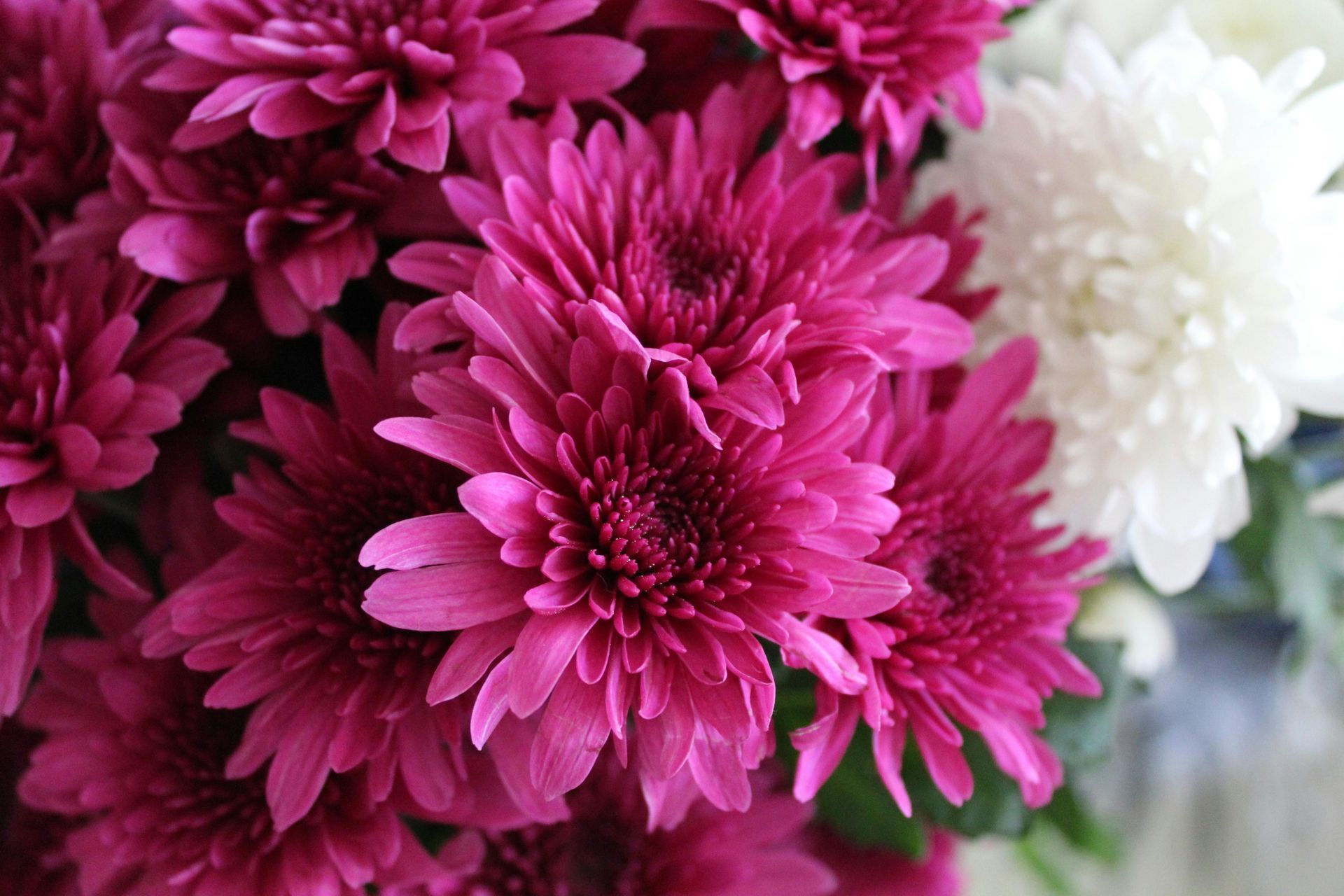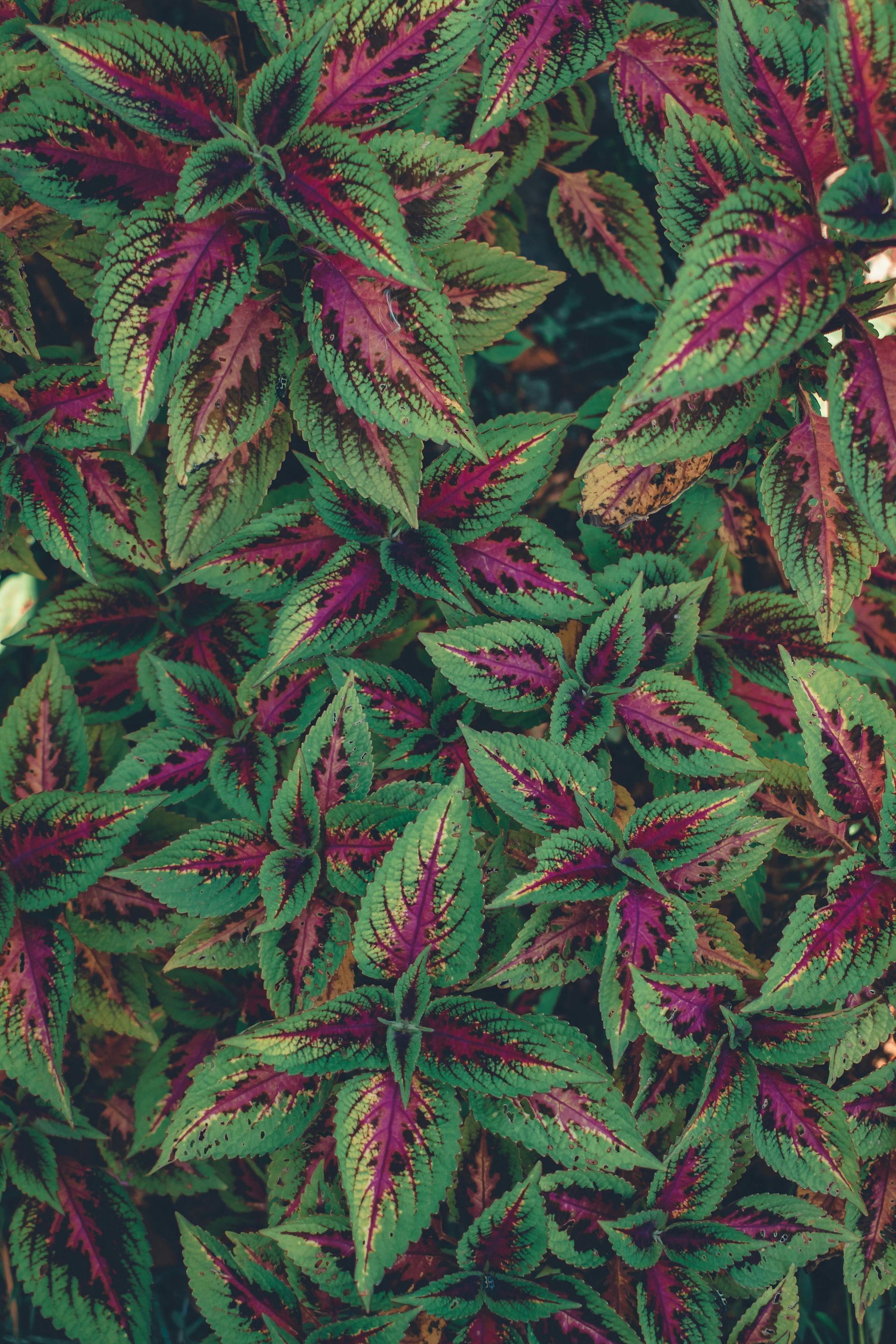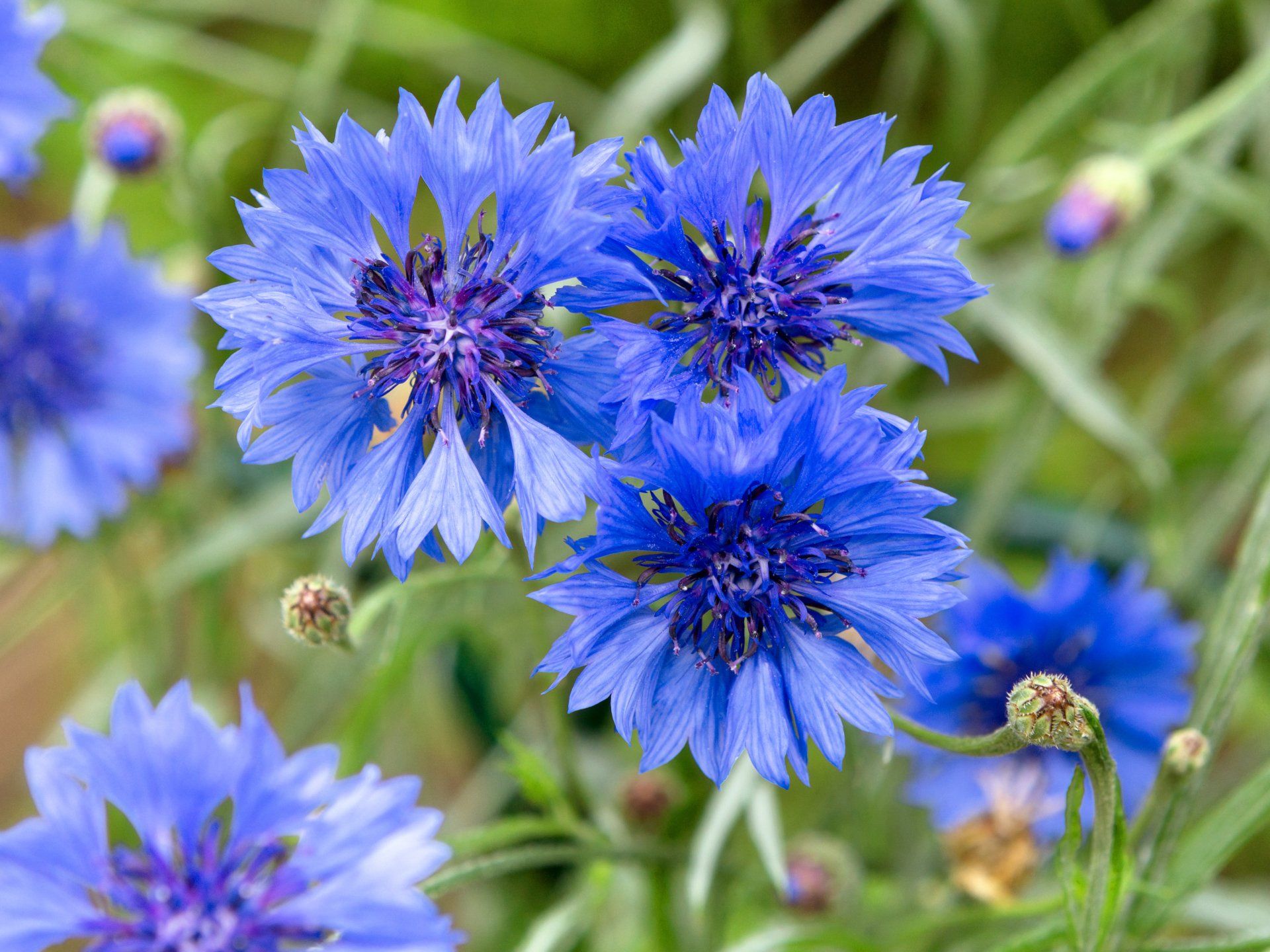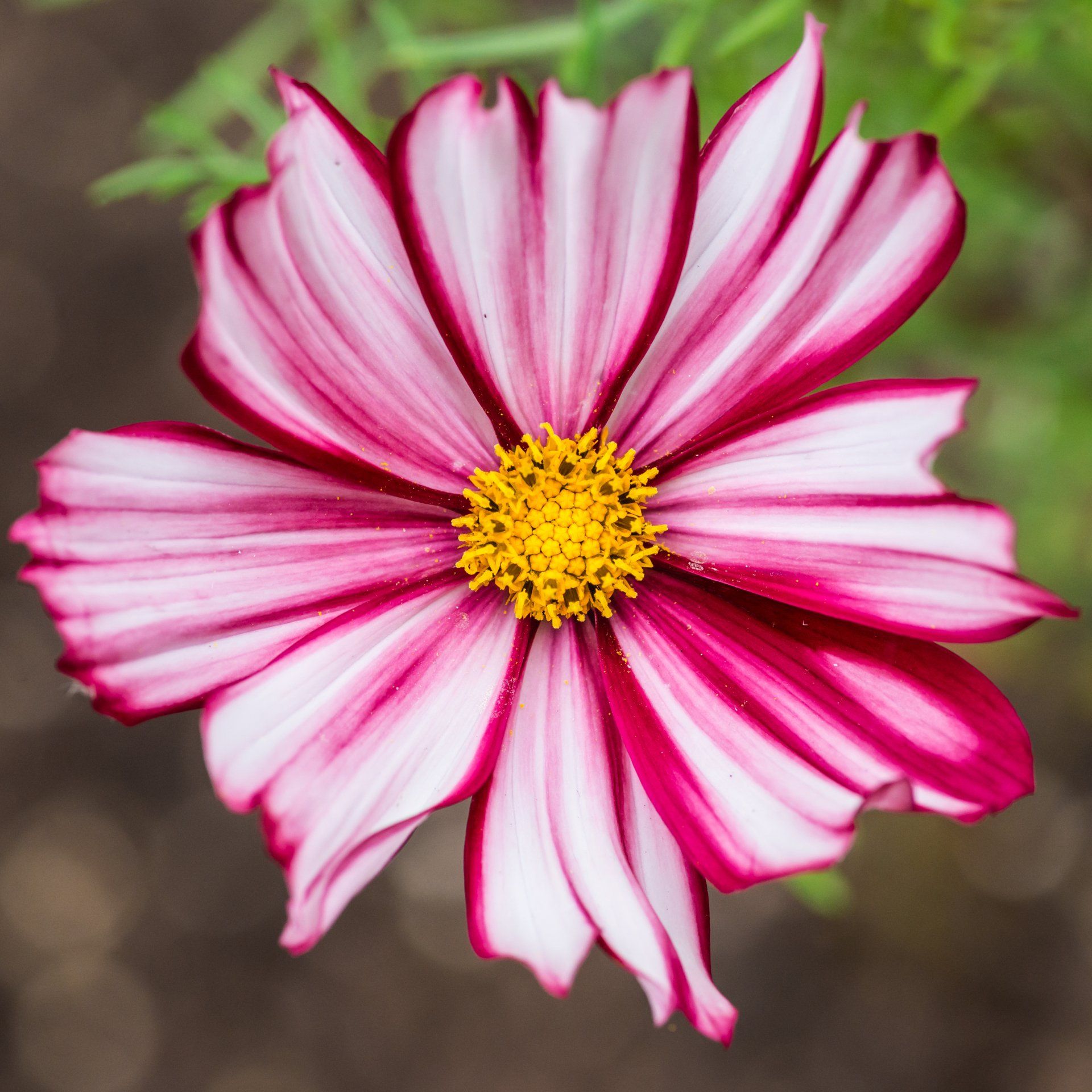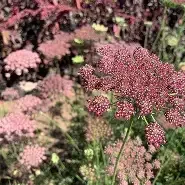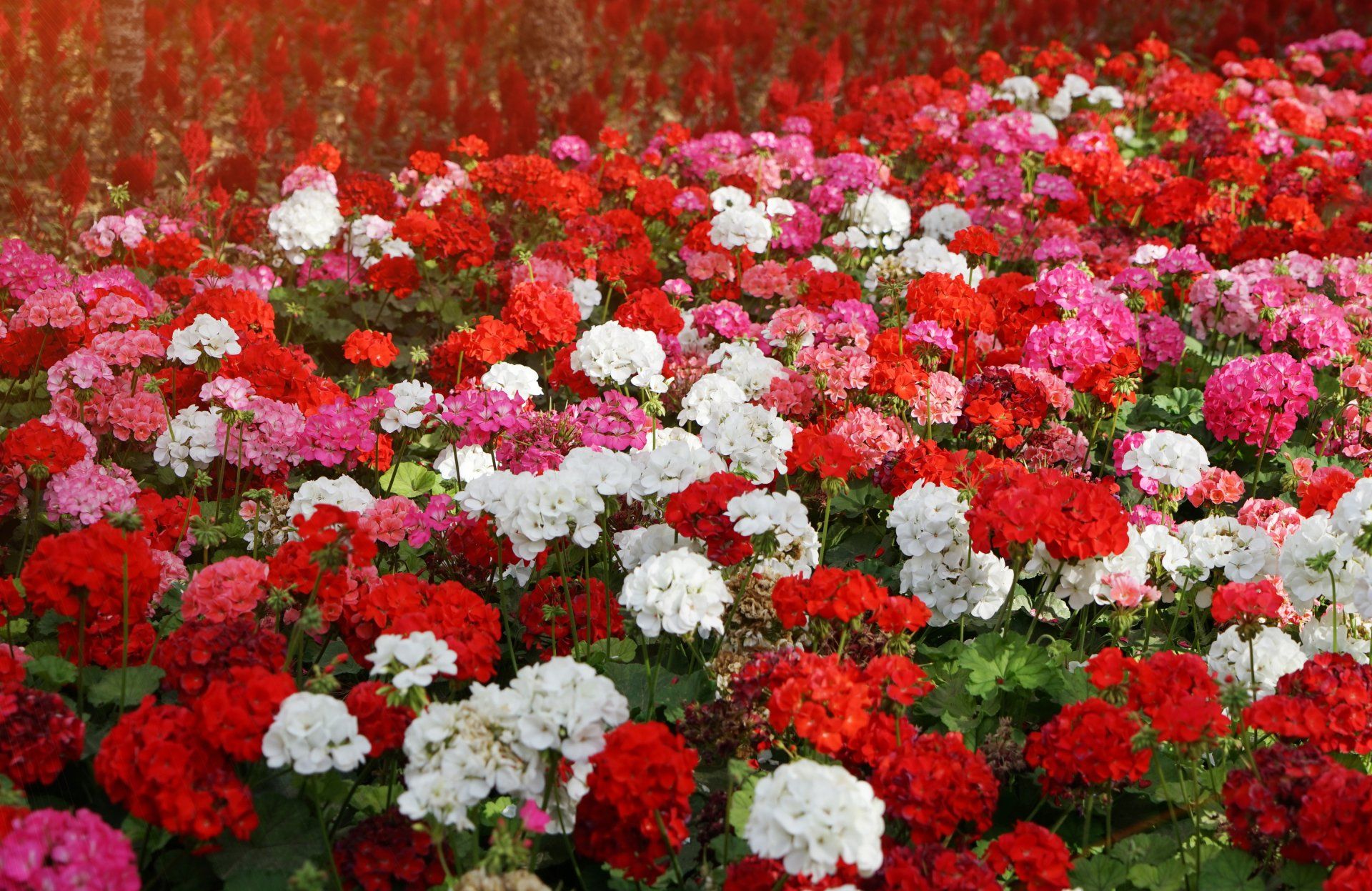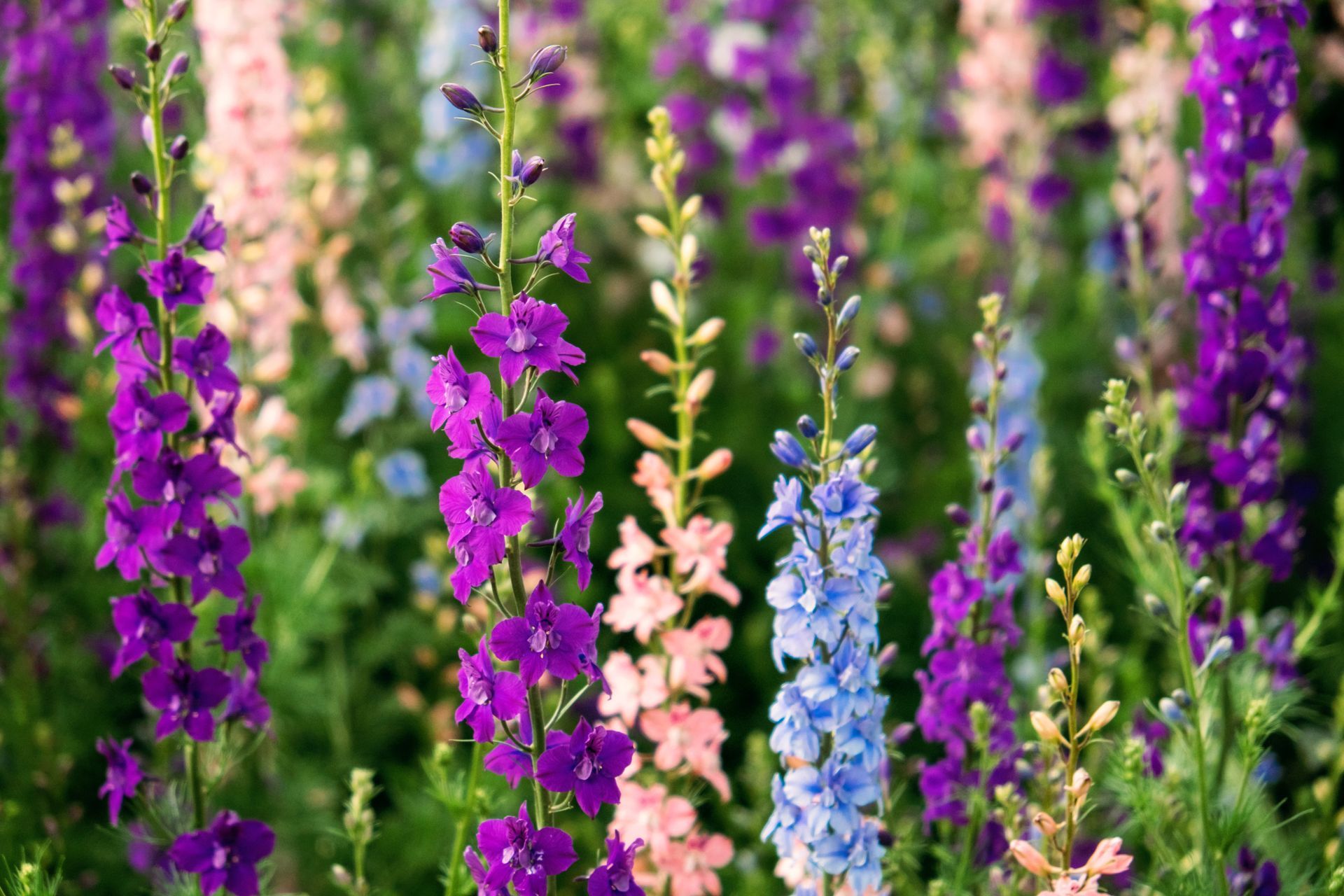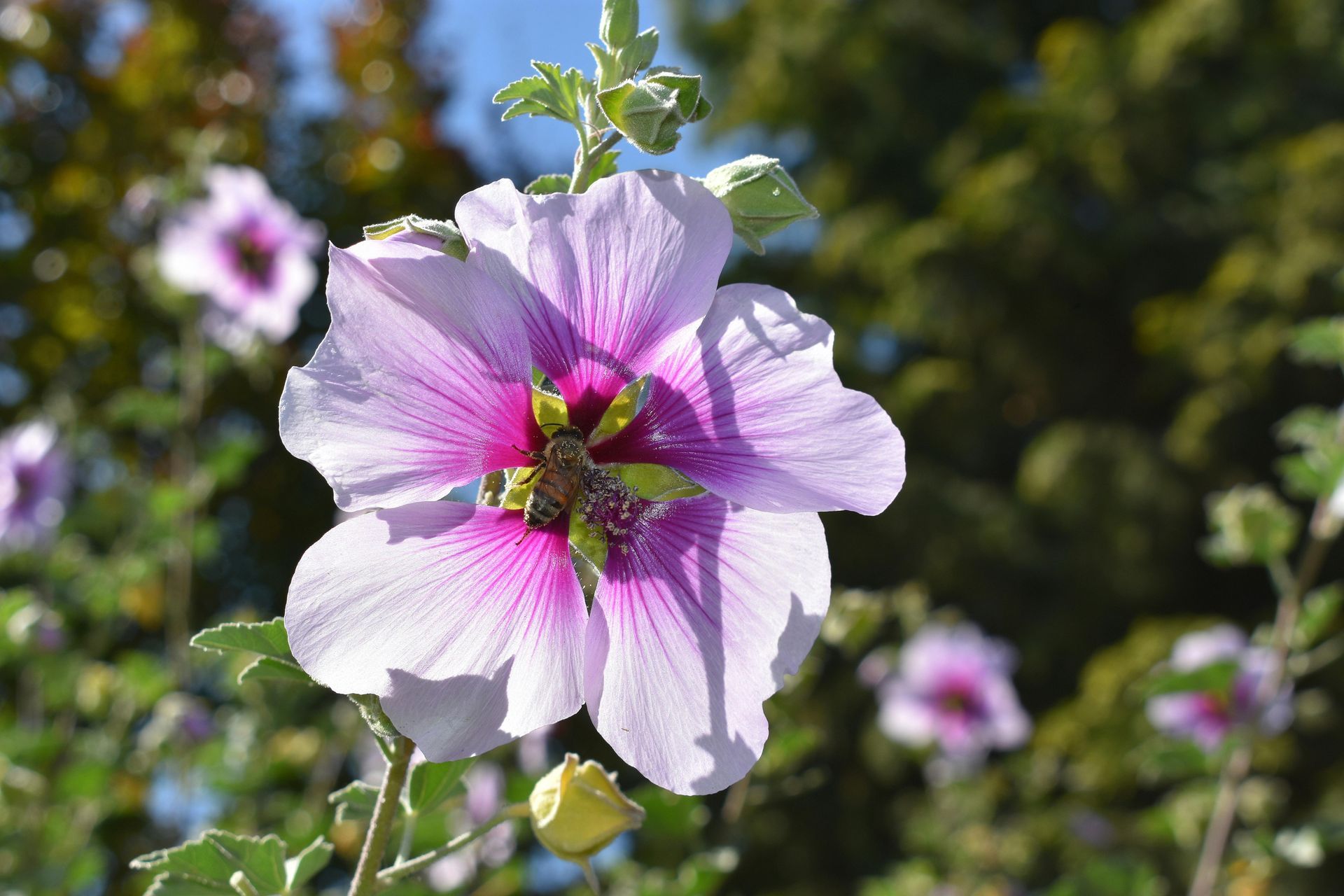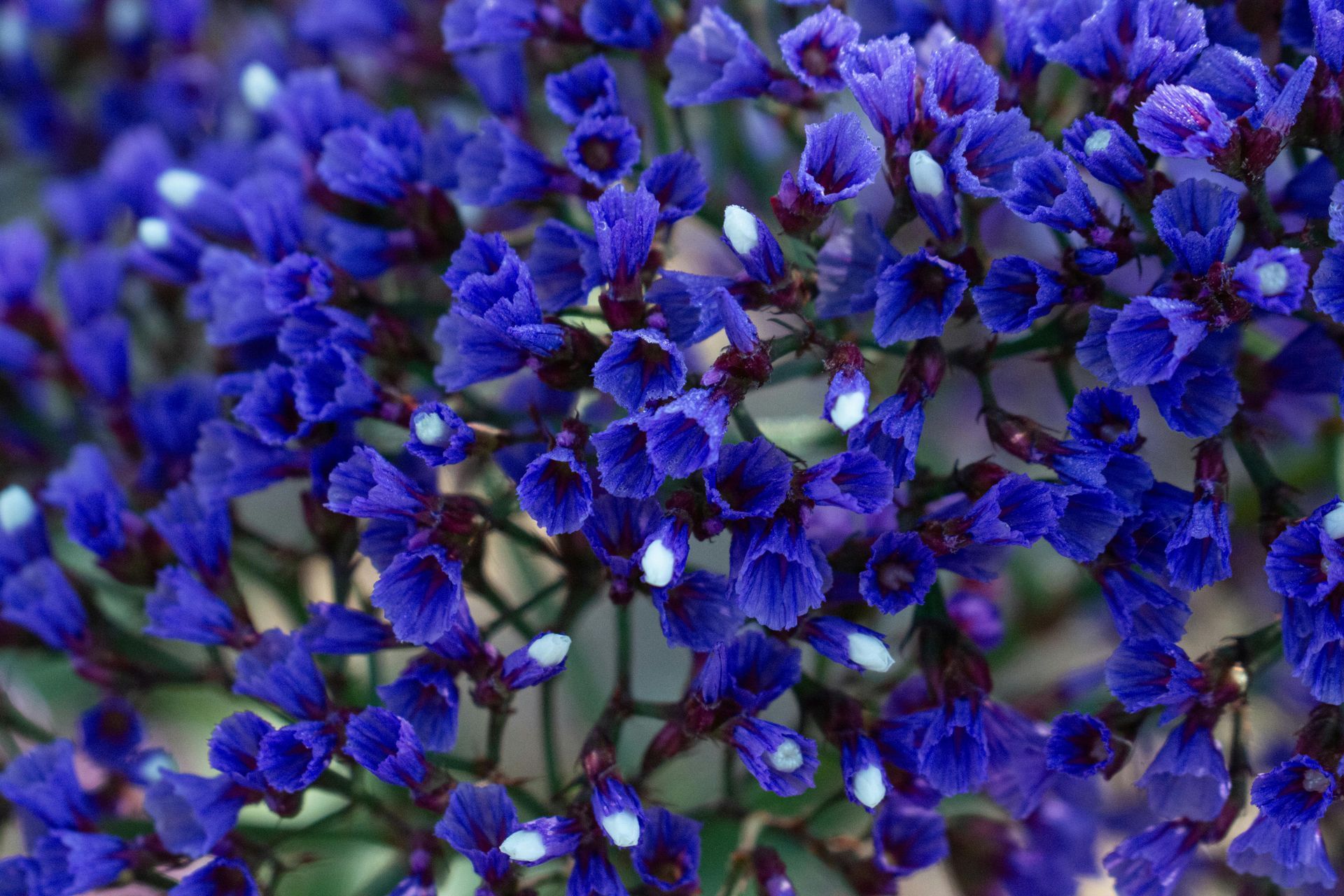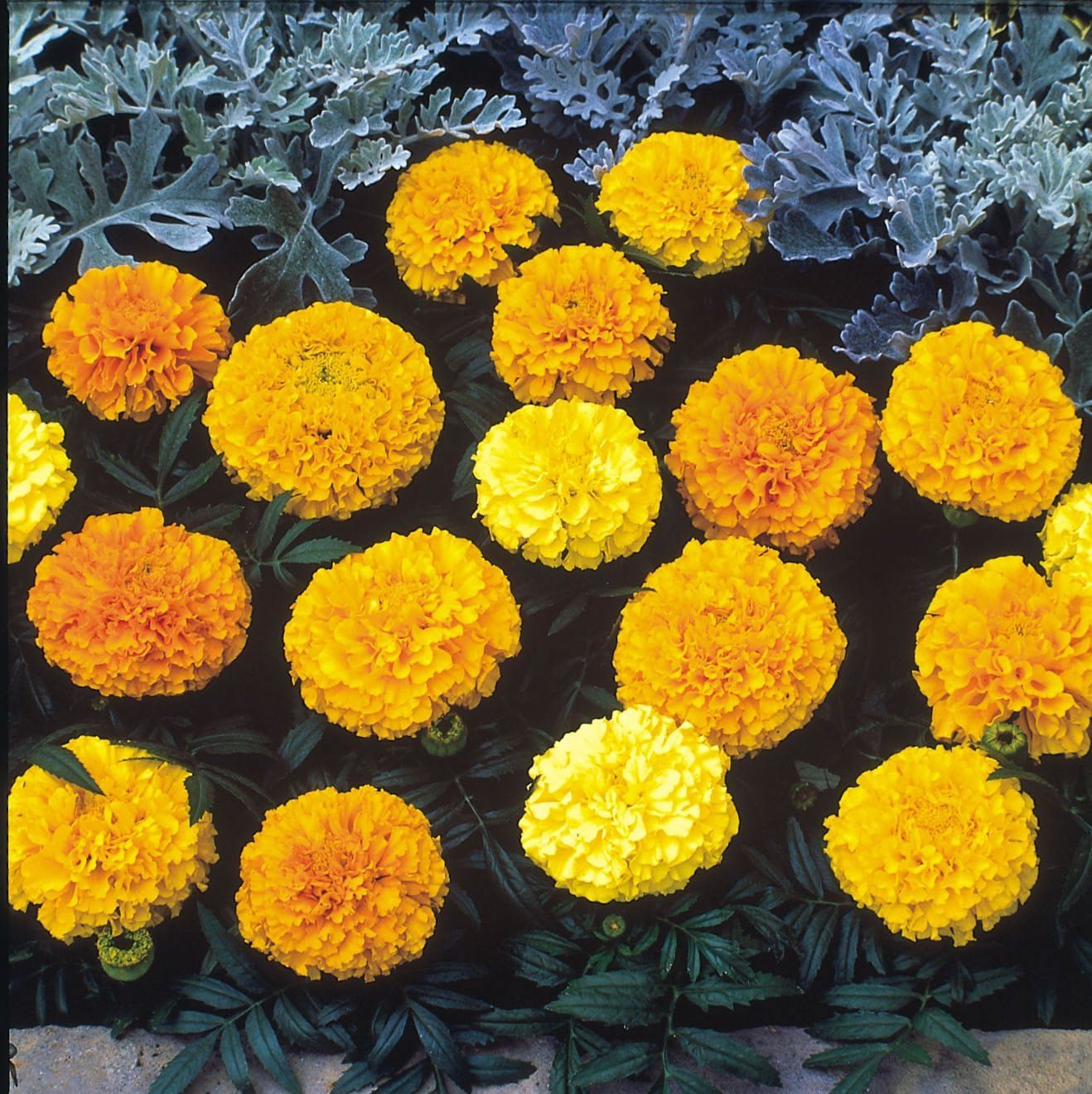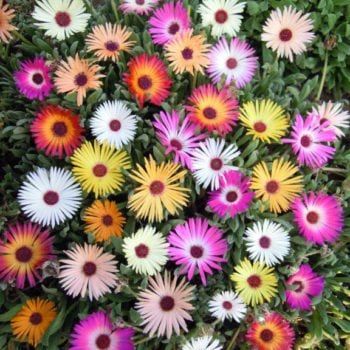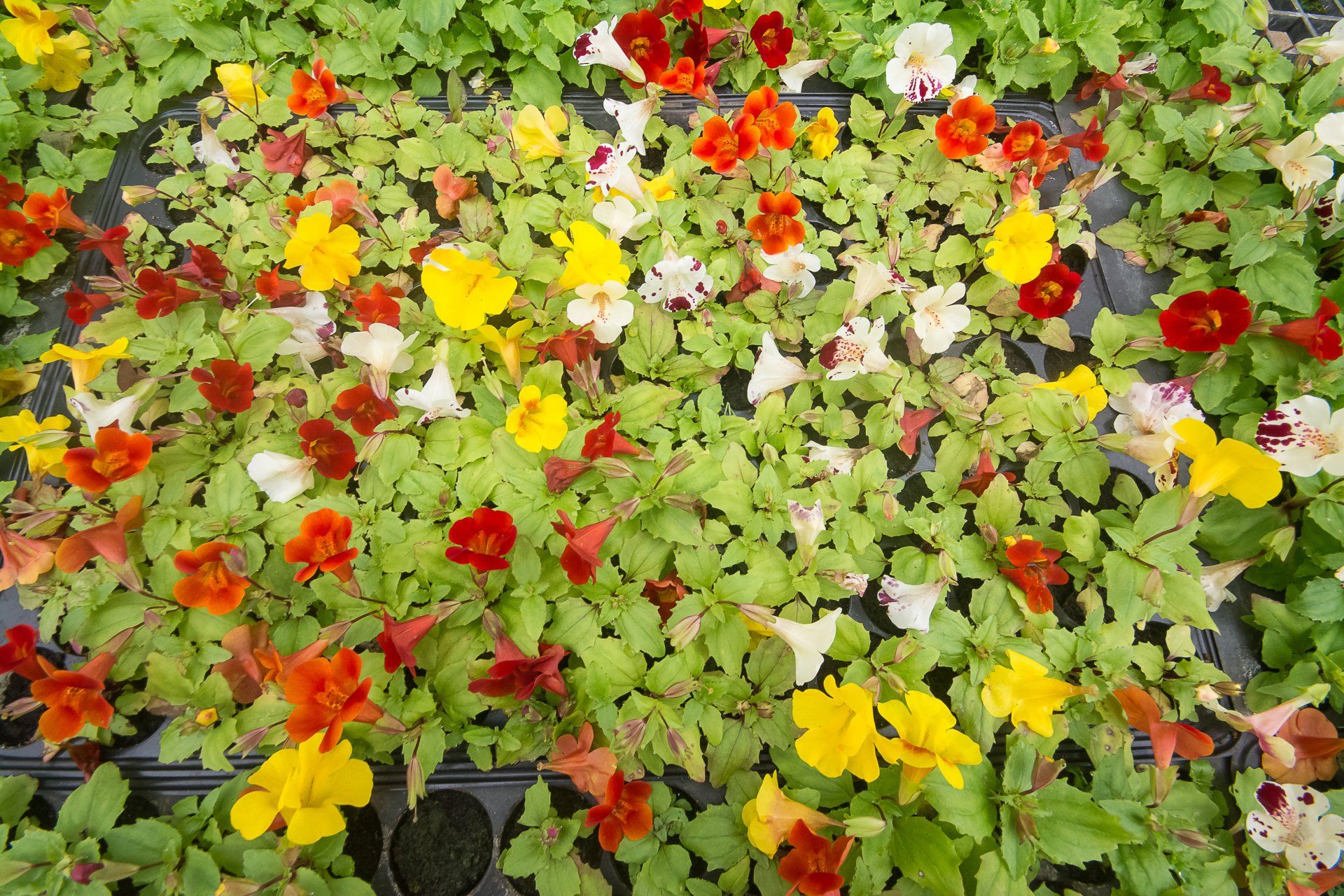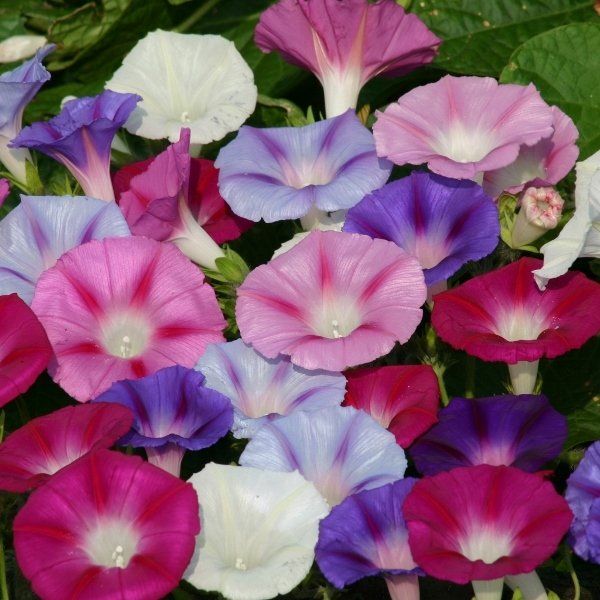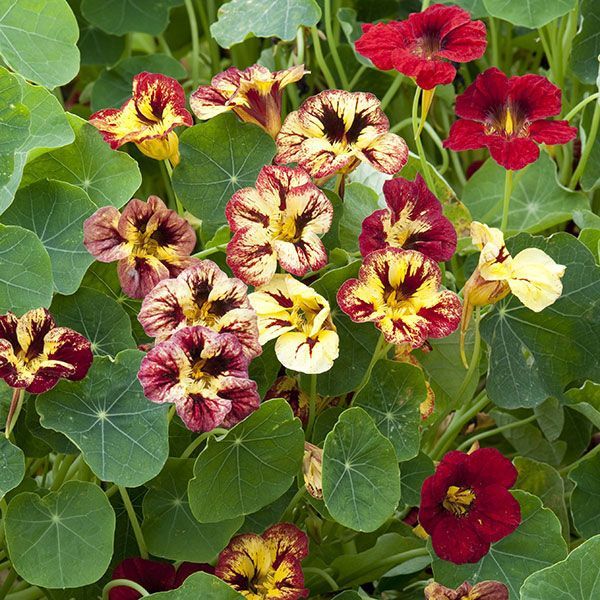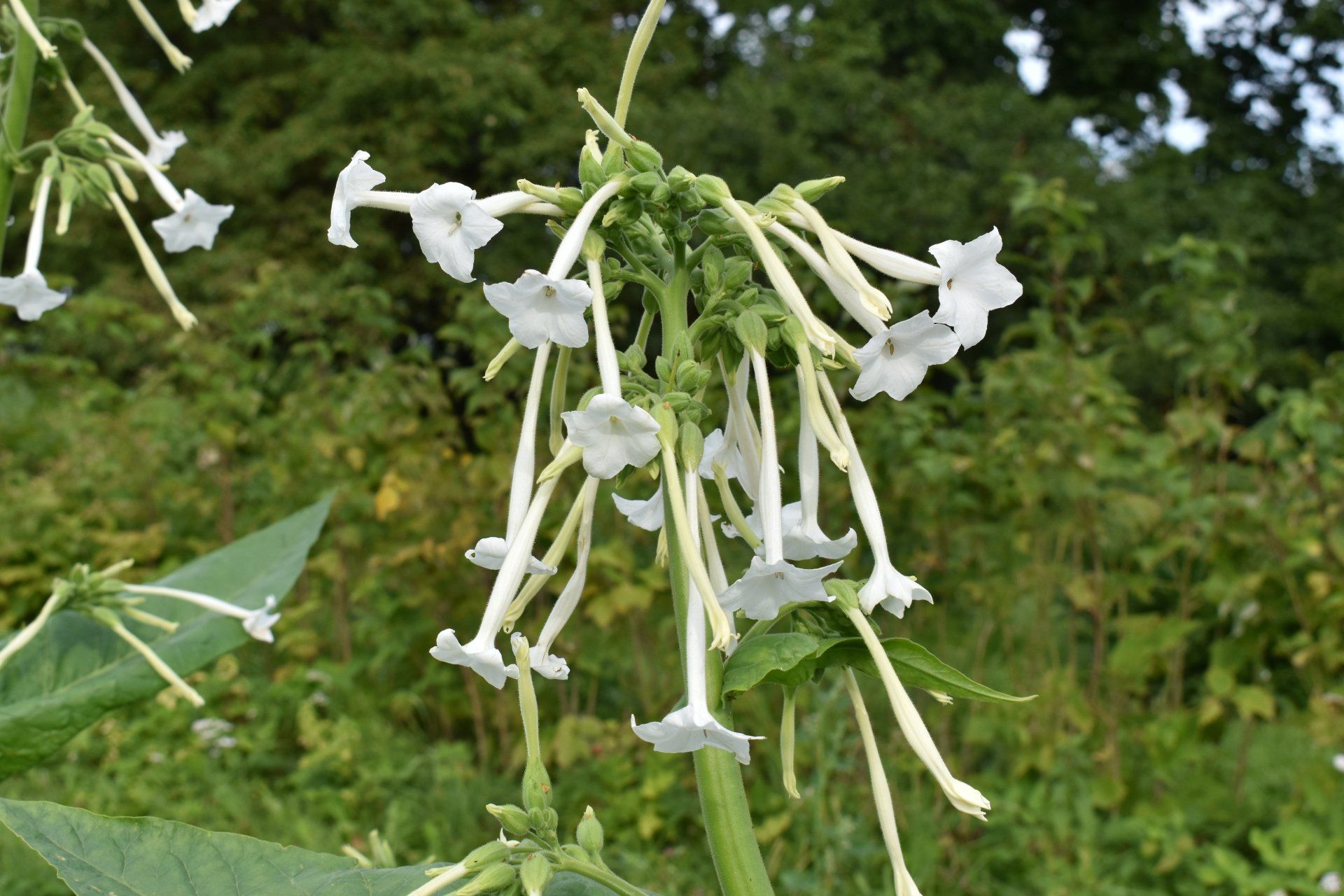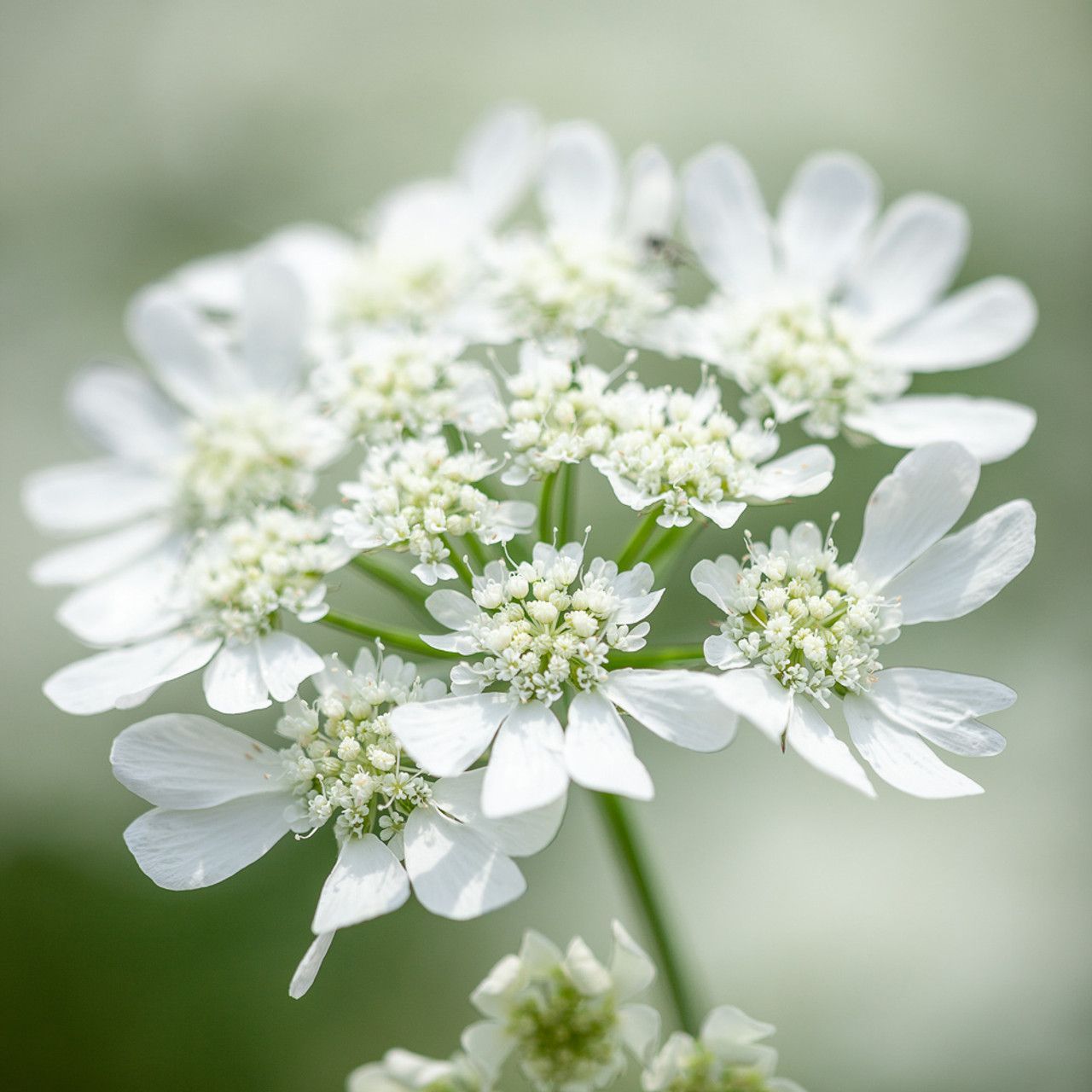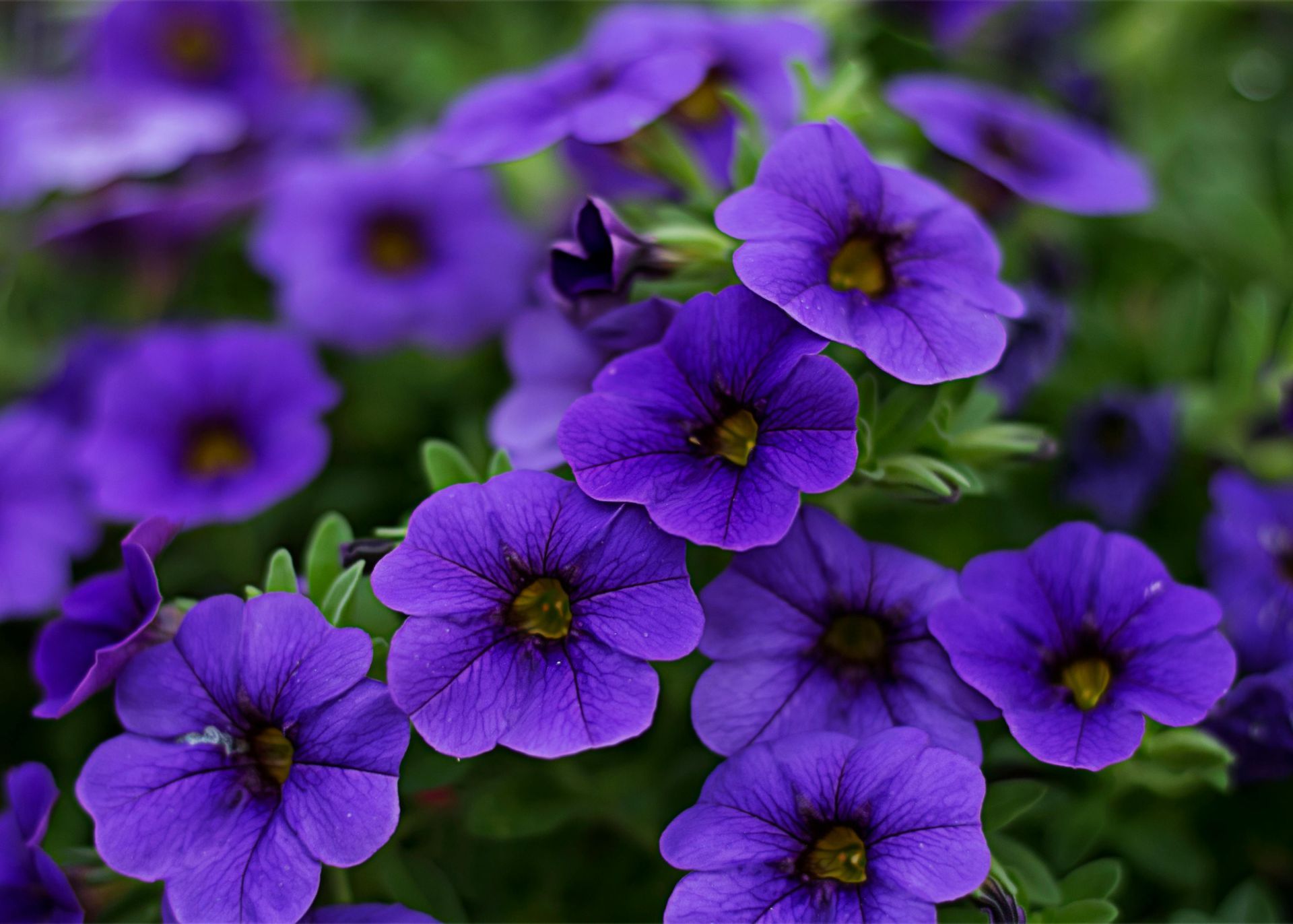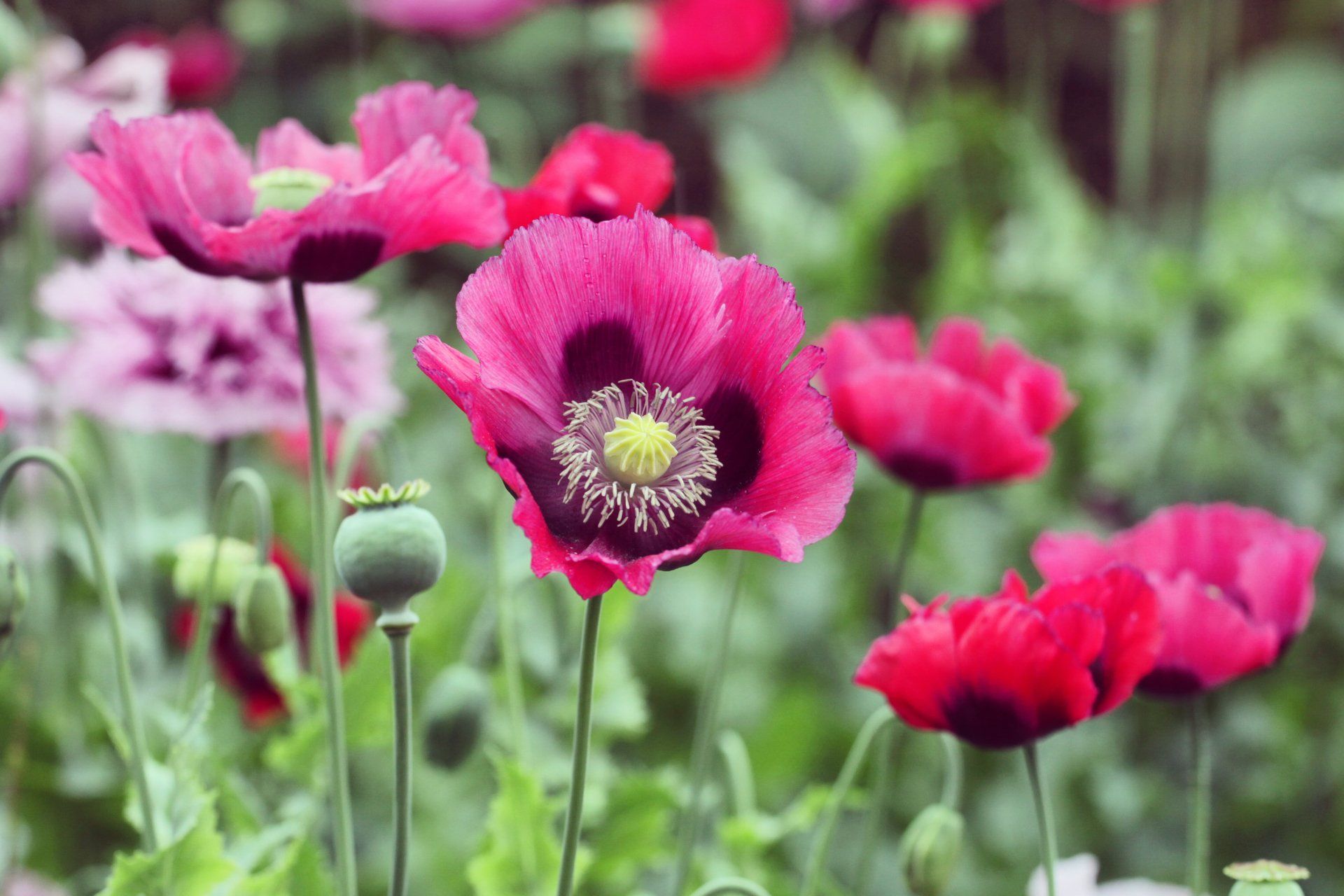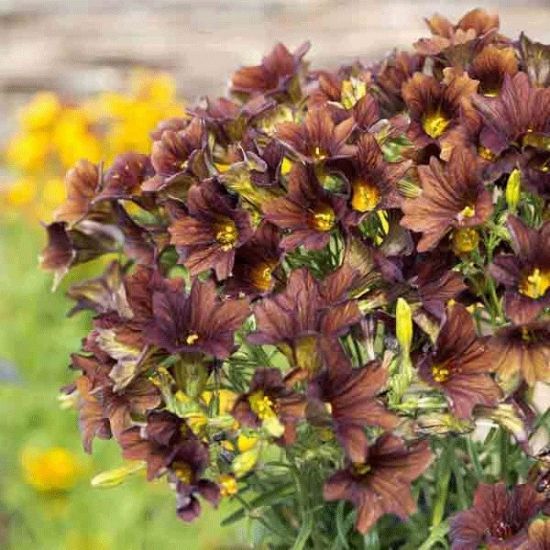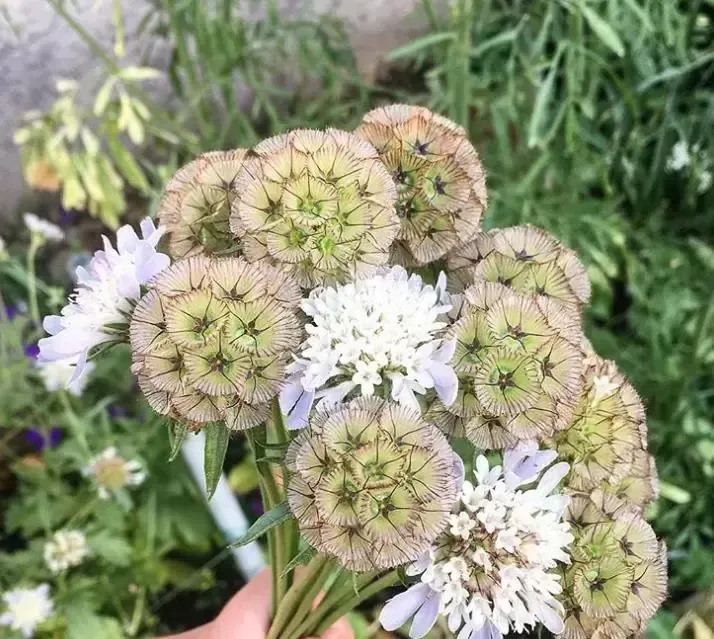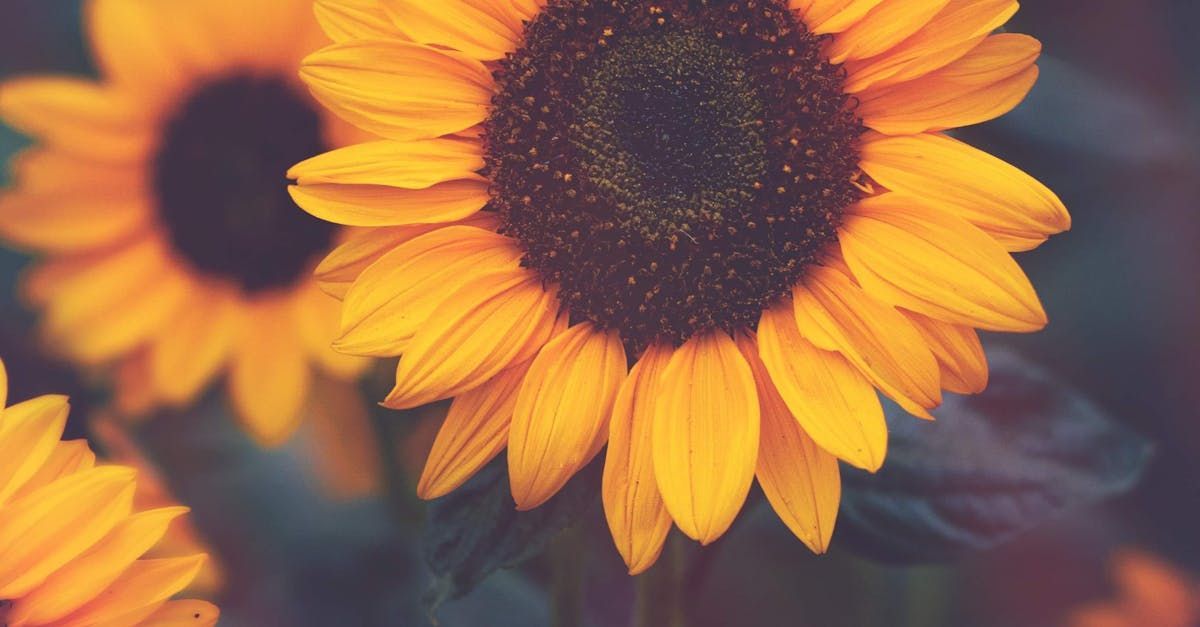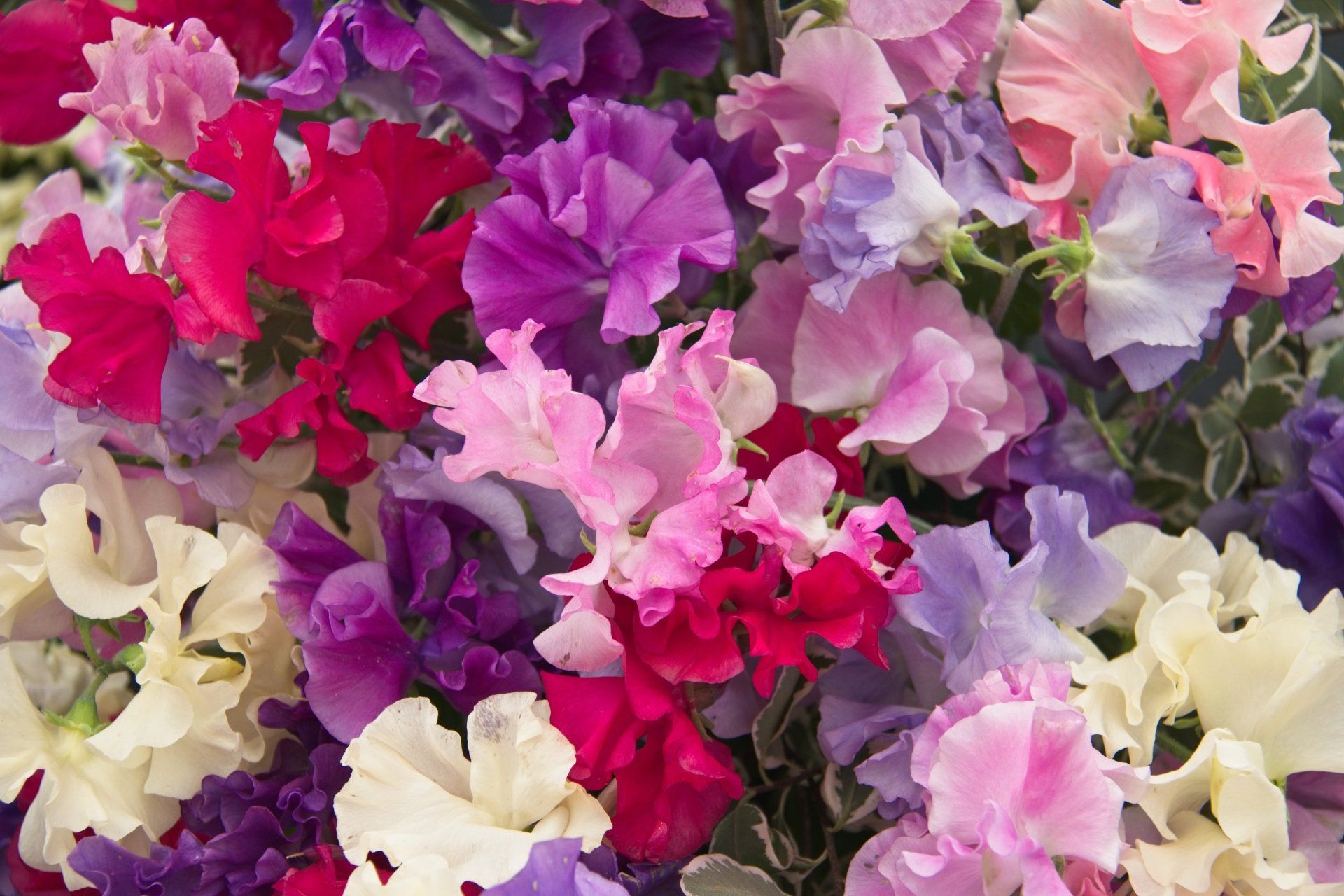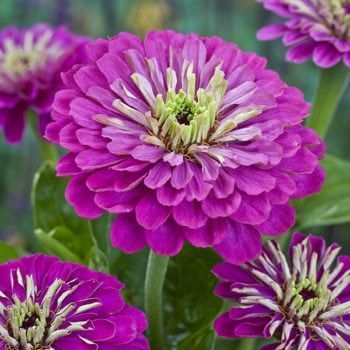Annual Flower Growing Guide
Our guide to growing annual flowers from seed offers simple, practical tips to help you fill your garden with vibrant, colorful blooms throughout the season. Whether you're planting in beds or containers, these tips will help you achieve a stunning display of annual flowers.
Top 3 Tips for Growing Annual Flowers from Seed:
- Start Indoors or Direct Sow: Depending on your climate, start seeds indoors 6-8 weeks before the last frost or sow them directly into the garden after the danger of frost has passed. Provide plenty of light and warmth to encourage strong, early growth.
- Pinch for Bushier Growth: Once your seedlings have a few sets of leaves, pinch off the growing tips to encourage bushier, more robust plants. This simple technique promotes more blooms and a fuller appearance.
- Water Consistently: Keep the soil consistently moist, especially during germination. Once established, water regularly but avoid overwatering, as soggy soil can lead to root rot. Regular watering, especially for container grown plants, ensures continuous blooming throughout the season.
Hardy annual plants
Hardy annuals are those that can withstand cooler temperatures and light frosts, allowing them to be sown directly into the garden in early spring or even in autumn for some varieties. They are tough and resilient, making them ideal for gardeners in temperate climates. Examples of hardy annuals include sweet peas, calendula, and larkspur.
Half-hardy annual plants
In contrast, half-hardy annuals are more sensitive to cold and cannot tolerate frost, meaning they should be started indoors or sown outdoors only after the last frost date. These plants thrive in warmer conditions and add vibrant color to summer gardens. Examples of half-hardy annuals include marigolds, zinnias, and cosmos.
Our guides are regularly being updated to reflect new stocks we bring in, but if there's something you're looking for and can't find here, just drop us a message because I'm sure we can help out.
Technically a perennial, Alyssum is treated as a hardy annual smothered in tiny blooms, much loved by insects. It is capable of surviving light frosts than could kill more tender plants. With its beautiful clusters of rounded fragrant flowers it has 4 small petals, and are very effective when lots are planted together.
Reminiscent of Cow Parsley which softens the verges of country lanes, Ammi is a tall annual that produces a froth of delicate white blooms that bring a simple, elegant feel to summer borders. Commonly known as Bishops Weed, its graceful stems rise above ferny foliage, lending themselves nicely to summer bouquets.
Antirrhinum, or as most of us call them, Snapdragons are cheerful cottage garden plants, used as bedding to brighten up borders and containers. They're easy to grow and come in a range of different colours and heights, and therefore can be grown in a variety of situations. Attractive to wildlife, particularly bumblebees, they have a long flowering period, from June until October. Taller cultivars make good cut flowers and last well over a week in water.
With its soft-textured foliage and dainty blossoms, Brachyscome (aka Swan River Daisy) makes a colorful addition to the garden. Depending on the location, swan river daisies, can be grown as annuals or perennials - in the UK we grow them as annuals. When they bloom in summer, the prolific flowers cover the whole plant in blossoms, almost hiding the soft, feathery gray-green foliage.
Easy-to-grow hardy annuals flower from summer through to early autumn, making them a great choice for summer borders and containers. The flowers are good for cutting, have edible petals and are also used by herbalists to make skincare products. Plants often self-seed from year to year. Calendulas are unfussy plants that do well in most ordinary garden soil, including poor, dry soil. They flower best in full sun, but also tolerate light shade.
Chrysanthemums can be annual, hardy perennial or tender perennial, but we focus on the annual variety commonly referred to as “florists’ chrysanthemums” that have been bred from the Chinese and Japanese types to make excellent late season cut flowers. They come in a wonderful range of rich velvety colours, with shapes that vary from the neat pom-pom to outrageous spidery forms.
Forget the flowers, Coleus is all about the foliage, no matter the varieity, Coleus doesn’t fail to delight with it’s mix of colours and leaf type to give an interesting pot plant or bedding plant for mild areas but you must keep pinching out the flower buds otherwise it can go leggy. That said, their delicate blue spires can be a joy to see above the multicoloured patterns of the foliage.
Cornflower is an easily grown hardy annual wildflower that is quick to grow and blooms in summer, bearing masses of pretty, ruffled flowers on slender wiry stems. While not native to the UK, it was introduced from the Mediterranean thousands of years ago and is considered 'naturalised'. The original species is beloved for its deep blue blooms, but there's now a wide choice of varieties in shades of blue, pink, maroon, and white.
Cosmos will put on a continuous display throughout the summer months and well into autumn, standing on tall, slender stems which sway in the breeze creating that gorgeous soft and floaty effect. Perfect for a sunny spot in any mixed planting scheme, not only will they look great in the garden and be beneficial to pollinators, but they make lovely cut flowers too. Despite their delicate looks, these plants are pretty tough and will stay standing in rain or a drought.
Daucus carota, also known as Queen Anne's Lace, is the wild ancestor of the domestic carrot and a common wildflower found in dry fields, roadside ditches and open areas. Easy to grow from seed and performs best in well-drained to dry soils, with low to moderate soil fertility. The lacy flowers appear in shades of rose pink, through burgundy to chocolate.Up to a thousand tiny flowers are produced in delicate, lacy, flat-topped, clusters up to 10cm wide.
Gazania, also known as treasure flowers for their jewel bright blooms, are fantastic for bringing colour to patios and sunny borders. Grown as annuals their daisy-type flowers love sunshine and if they don't get enough of it, will close up. The blooms come in shades of rose, red, pink, bronze, gold and orange and are set off by the cool green foliage.
Ever wonder about the difference between geraniums and pelargoniums? For years there has been considerable confusion over what a geranium really is. The annual ‘geranium’ (pelargonium) is often referred to as a geranium. While geraniums and pelargoniums are related, both being members of the Geraniaceae family, there are various distinct differences between the two in, growth, appearance, and seed dispersal technique. The seeds we sell are strictly Pelargoniums, but like many gardeners we were brought up with their misclassification and so we call them Geraniums.
Helicrysum, also commonly known as Strawflower a popular are a popular everlasting flower. With strong stems and bright flower heads, they are perfect for preserving. To preserve flowers for the Winter, cut stems just before flowers are fully open, hang small bunches upside down in a cool ventilated area. The bright colour of the flowers will remain, whilst the stems dim to a golden colour.
A stunning cottage garden plant, adding height and colour to border displays. Larkspur flowers work well with roses, peonies and other tall growing flowers such as lupins and verbascums. Larkspur flowers are usually blue but they also come in mauve, pink, white and even red. They can be single or double, depending on the variety. Single-flowered varieties are loved by bees.
Lavatera come in both dwarf and tall varieties, both with a nice bushy habit and the dark green leaves contrast wonderfully with the glistening flowers which come in so many shades. Lavatera fFlowers in the first year from an early sowing, attracting bees and butterflies as well as being a stunning cut flower.
Limonium, also known as Statice and Sea Heather is probably the most popular of all the everlastings. With strong stems and bright flower heads, they are perfect for preserving. To preserve flowers for the Winter, cut stems just before flowers are fully open, hang small bunches upside down in a cool ventilated area. The bright colour of the flowers will remain, whilst the stems dim to a golden colour.
Marigolds (Tagetes) are among the most common and reliable of all bedding flowers. These cheerful flowers with warm colors and fern-like foliage are true annuals, completing their life cycles in a single growing season. The size of the blooms can vary considerably, from tiny single-petal flowers to the large 4-inch double-petal blossoms of the African marigolds. Whilst all Marigolds are edible, not all are known to be tasty!
Mesembryanthemum is an easy to grow annual bedding flower which produces colourful blooms throughout the summer. The daisy like flowers come in shades of red, magenta, pink, yellow, white and orange and open with the sun each day and turn to face it moving across the garden. Can tolerate drought and sandy soil and is a useful plant to brighten up rock gardens, walls and paths.
Mimulus is known for having unusual monkey-faced, snapdragon-like flowers. Typically, they grow in woodland environments, and can often be seen beside woodland streams. Trailing varieties of mimulus will turn any hanging basket into a profusion of cascading flowers. They will grow freely in spring and when grown in a flower bed it will produce a mound of flowers throughout the summer.
Morning Glory is a frost tender annual climber that bears beautiful, exotic-looking, colourful flowers on fast-growing twining stems clothed with heart-shaped green leaves. The name 'morning glory' comes from the plants’ flowering habit – saucer-shaped blooms open early and just for a day, fading by mid-afternoon in hot weather. Many flowers are borne in succession, so this plant makes a lovely display for months, flowering through summer and into early autumn.
The Nasturtium is a cheerful and easy-to-grow flower! Their bold blooms and edible leaves, flowers, and seedpods make them an especially fun flower for kids to plant and a favorite companion plant in the garden. Nasturtium is a good companion plant for: bean, broccoli, cabbage, cucumber, kale, melon, pumpkin, and radish. They are also a favorite of pollinators like bees, butterflies, and hummingbirds, and their pretty fragrance makes them a good choice for cut-flower gardens, too.
Nemesia are colourful annuals and short-lived perennials, bearing wonderfully fragrant, colourful flowers from late spring right through to autumn. Nemesias originate from South Africa and are frost-tender. They flower in a range of colours, including orange, red, pink, purple, blue, and white, often with contrasting centres. Nemesias tend to be bushy and compact, suitable for growing at the front of a border or in pots, or trailing and therefore more suited to hanging baskets,
The tobacco plant, Nicotiana, is a popular summer bedding plant, coming in a range of colours and sizes. The trumpet-like, night-scented flowers make Nicotiana a great choice for planting near a seating area. Perfect for growing in a mixed border or container display. Nicotiana are easy to grow from seed. Many varieties make excellent cut flowers. Also a great plant to have in your greenhouse where the sticky leaves will trap unwanted pests.
Nigella, also known as Love-in-a-mist, is a wonderful cottage garden plant and a great filler. The airy foliage makes a nice complement to broader leaved plants. Nigella is a short-lived plant and probably won't make it through an entire growing season. For continuous blooms throughout the summer, make succession sowings every three weeks. Once your plants have begun to scatter seeds on their own, you won't need to continue sowing.
Orlaya makes an easy to grow, quick border filler. It gives lovely fern-like foliage and clusters of pure white flowers, similar to lace-cap hydrangeas, with its flowers composed of small inner florets framed by large outer ones, forming a pretty pattern which is reminiscent of lace-cap hydrangeas. Planted en masse, the luminous white petals have a shimmering effect, creating a soft haze which melds plant masses together, immediately capturing that romantic cottage garden vibe. Long straight stems and soft ferny foliage add to its appeal.
Petunias are some of the most outstanding bedding plants, thanks to their knack for creating a vibrant mass of colourful summer blooms. Versatile, ideal for different types of pot or hanging basket as well as in the ground. Colours range from ultra-brilliant pinks, reds, and purples, to soft pastel shades and white. The size of the flowers ranges, too, and you can choose varieties with ruffled edges and bi-coloured blooms, along with single- and double-flowered varieties.
Phlox are herbaceous plants that bear a profusion of small, often scented flowers in summer. They range from tall border perennials to creeping phlox or alpine varieties and woodland types, as well as annual varieties that can be grown as bedding; those are the varieties we focus on at Collie Flowers and have available in our range of seeds. As well as being fragrant and long flowering, most cultivars attract a variety of bees and other pollinating insects.
Poppy is the common name for plants in the Papaveraceae family. Within this group there are annuals, perennials and biennials. They include oriental poppies, peony-types, opium poppies, field poppies, Calfornia poppies, Icelandic Poppies, Welsh poppies and Himalayan poppies. Their summer flowers may be fleeting but whatever variety you choose they make a wonderful addition to the garden.
Salpiglossis is an upright annual, with slender stems and wavy-edged, lance-shaped leaves. From summer to autumn these plants produce masses of funnel-shaped flowers to 5cm across. This South American native loves cool weather and blooms from spring until the plant begins to fade in midsummer. However, don’t be too quick to pull the fading plants as they will often produce a late-season burst of colour when temperatures drop in autumn.
Scabious, also known as pincushion flowers, are easy-to-grow. They are button-like in shape and have petals that flutter in the breeze. Under ideal growing conditions, blooms can last from spring to the first frost, although they might slow down in the high heat of summer. Equally useful as a cut fresh flower or seed head, Ping Pong (our favourite variety) gives several handfuls of stems from a single plant alone.
Sunflowers come in a range of sizes and colours, with many now having multiple flower heads from a single stalk. Sunflowers prefer a well drained soil in full sun. Tall varieties shoudl be sown early to allpw growing time and will need staking if sited in a particularly windy area. For varieties offering multiple flowerheads deadhead regularly to encourage continuous flowering. If space allows once the flowers are spent at the end of the season leave the heads to form seeds which will provide food for wildlife through the winter.
Grow beautiful and flouncy Sweet Peas from seed each year for their fragrance and for cutting, climbing them over obelisks or twiggy supports in borders or in a cutting garden. Pretty, pea-like flowers come in shades of white, pink, coral, red, violet and blue, some combining two colours. Pastel shades are especially popular and petal edges may be wavy or outlined with a contrasting colour. Sweet peas are easy to grow in any fertile soil that drains easily, in full sun.
If you love sunflowers, but want something smaller for the border and a bit more delicate but packed with flowerheads, Venidium is the flower you’ve been searching for. Venidium are a low maintenance plant, once in a sunny spot, avoid overwatering, and enjoy its vibrant show throughout the season. Venidium give multiple flowerheads, so deadhead regularly to encourage continuous flowering.
Zinnia are annual plants, popular because of the colourful, daisy-like flowers. Native to Mexico, there are 18 species and hundreds of cultivated forms, which are grown as annual bedding plants. Flowers come in vivid colours from red, orange and deep pink to green, with a lovely long flowering season from summer to the first frosts. Zinnias are perfect for filling gaps in the border and also work well in container displays. Long stemmed varieties make great cut flowers and single-flowered varieties are attractive to pollinating insects.
